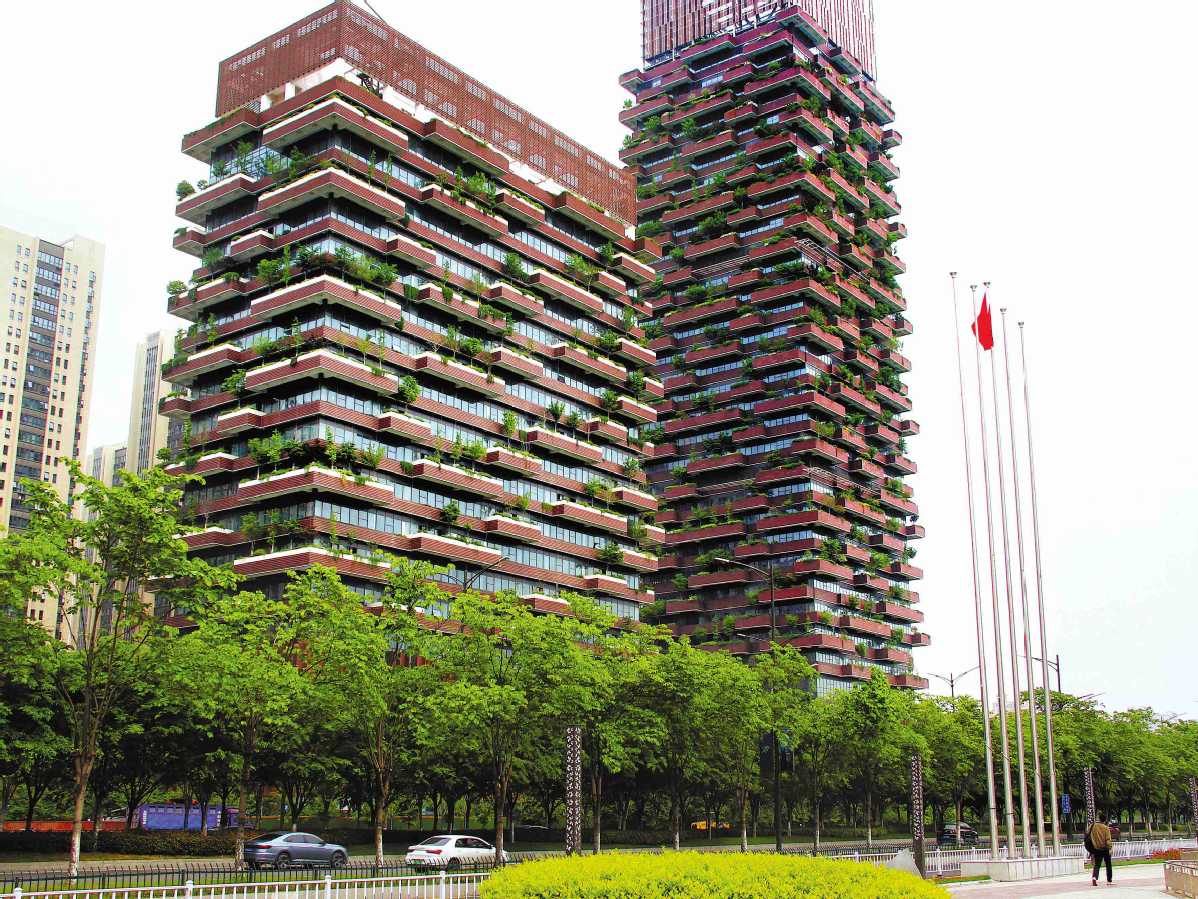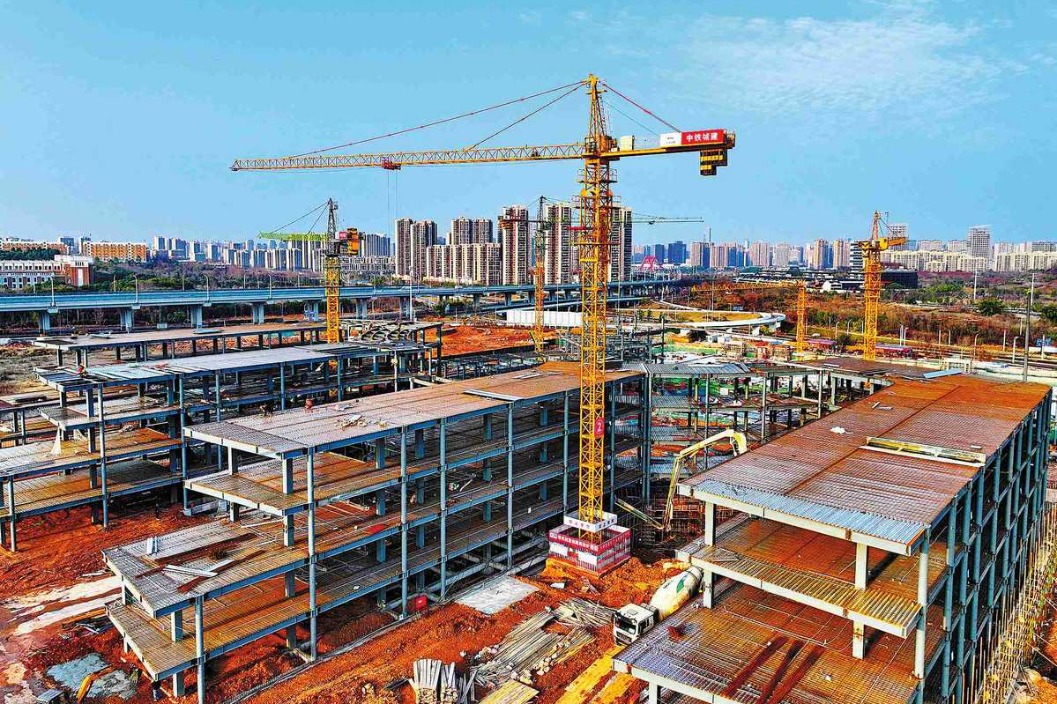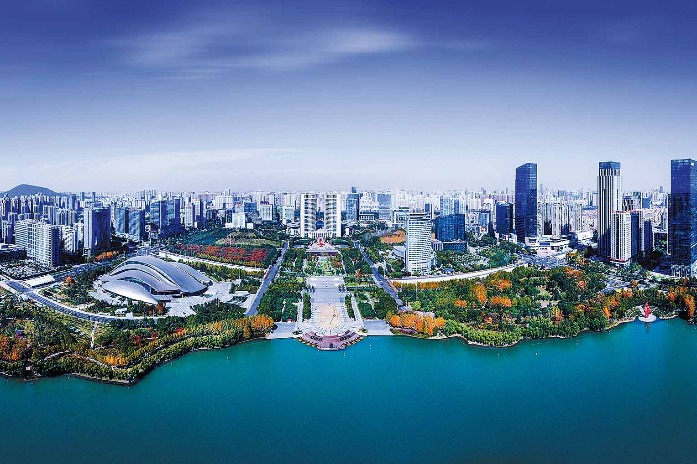Quest for green spaces makes good business sense
Low-carbon lifestyle increasingly favored by young people and is influencing design, energy and construction parameters in a number of key sectors


With the development of ESG(environmental, social and governance), China's pursuit of its "dual-carbon" goals, and consumers' rising awareness of sustainability, the green building industry has become a sunrise industry that is poised for significant growth as it gains prominence in the country.
Green building refers to a building that conserves resources to the utmost (energy conservation, land, water and materials), protects the environment and reduces pollution. It provides a healthy, applicable, and efficient environment for people, while also forming a symbiotic relationship with nature throughout its life-cycle.
Behind the rise of green building, the preference of pursuing a greener lifestyle is gaining traction among a growing number of people. Consumers now increasingly bring their own mugs or bottles when buying coffee. Moreover, LEED (leadership in energy & environmental design) cafes and restaurants are becoming highly popular among the youth as they pay special attention to the LEED marks on the store's window before entering.
The LEED rating system, devised by the United States Green Building Council, assesses the degree to which a building is environmentally friendly, utilizes energy-efficient equipment, and actively adopts renewable energies or other technologies that reduce the negative impacts of buildings on the environment.
"For many young people, ESG is no longer an unattainable concept, but a practical and achievable one. More and more young people are choosing to purchase, use, and promote products with environmental elements and are adopting green, low-carbon lifestyles. This trend is particularly evident in sectors such as food and beverages, household goods, and fashion," said Wang Jing, vice-president of USGBC North Asia.
On Middle Urumqi Road in Jing'an district in Shanghai, there is the world's first LEED Zero Energy pharmacy. Different from regular pharmacies, the LEED Zero Energy pharmacy stores certain drugs in refrigerators, keeping them at a constant temperature and humidity. The refrigerators are energy-saving, and use environmentally friendly refrigerant.
"In terms of daily routine work, we adopt a series of online internal and external office systems to reduce the generation of paper waste. Not only in our stores, but also in our office and logistics systems, we have gradually achieved paperless and electronic documentation, as well as the use of recyclable turnover boxes. In addition, for unavoidable waste such as pharmaceutical packaging, we also conduct detailed classification and collection in accordance with LEED requirements to better realize the resource utilization of garbage," said Yang Ge, senior vice-president of Cowell Health, the parent company of Cowell — the LEED Zero Energy pharmacy.
Not only is the healthcare sector going green — more enterprises in the food and beverage sector were ahead of the curve and are now scaling up their green building efforts. By June 2024, Chinese coffee chain Luckin Coffee owned three LEED Gold-level outlets located in Xiamen in Fujian province, and in Tianjin and Hangzhou, Zhejiang province. The outlets are greener in terms of design and construction.
Based on the degree to which buildings meet certain criteria in categories such as energy efficiency, water conservation, and indoor environmental quality, there are four levels of LEED certification: Certified (40-49 points), Silver (50-59 points), Gold (60-79 points) and Platinum (80+ points).
Luckin was also the first Chinese coffee brand to acquire LEED Platinum-level certification. Its 20,000th outlet — the one in Beijing Zhongguancun — acquired the certification by the end of 2024. The outlet was built according to LEED Platinum-level standards during both the design and construction stages.
By installing intelligent energy monitoring system and energy-saving equipment, the outlet's energy efficiency has been significantly improved, and energy conservation and emission reduction have been promoted. With the help of a fresh air system and intelligent LED lighting, consumers can have a more comfortable shopping experience in the store. The store has performed well in water conservation, energy conservation, indoor environmental quality, site selection, waste management and other aspects, meeting the highest standard of LEED.
"Currently, Luckin's LEED Volume Prototype of store has been pre-certified at the Gold-level, laying a foundation of certifying our outlets by batch. We expect to certify 15 outlets this year. In addition, we plan to integrate the concept of sustainable development into the entire industry chain. For example, our bakery base in Jiangsu province was constructed based on LEED Platinum-level standards, applying energy-saving and carbon-reduction technologies such as solar photovoltaic power generation and heat recovery," said Sabrina Zhao, general manager of public communication of Luckin, also in charge of the company's sustainable development.





































